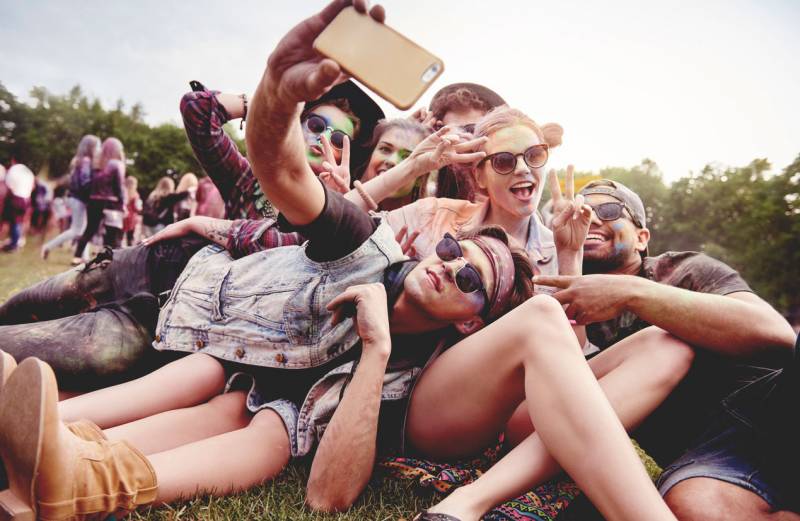“At the end of the day, the most efficient way to get monkeypox isn’t going to a music event,” he explains. “It’s from skin-to-skin contact over several hours with an open sore in an intimate contact situation.”
San Francisco Health Officer Dr. Susan Philip says people who develop symptoms such as unexplained rashes or are feeling sick should avoid large gatherings. “Cover the areas with clothing or with bandages so that the skin [with the rash] is not exposed to other people,” she says. “And wear a mask and go see a provider for evaluation, because cases are increasing.”
The San Francisco Department of Public Health offers an informational toolkit which includes posters about monkeypox that event producers can download and display at gatherings.
Masking helps reduce risk
At a festival or gathering, “you’re much more likely to get COVID than monkeypox,” Chin-Hong says. Masking helps reduce risk of both. While N95, KF94 or K95 masks have proven effective in reducing COVID-19 transmission, Chin-Hong says, a surgical mask or simple cloth mask can protect you from monkeypox.
Even at clubs and festivals, where people tend to lean in close to talk over the music, Chin-Hong says respiratory transmission is relatively low-risk. “[Someone] must be shouting at you for hours, probably, for that to occur,” he says, adding that kissing would create a higher risk of transmission through saliva than conversation.
Although simply standing in a crowd creates a low risk of transmission, wearing clothes that cover the skin can be another form of protection. “If people are concerned about monkeypox, it’s good to keep some distance between them and other people in crowds,” says Philip. “To wear clothing that covers the skin is also another way to protect themselves.”
The biggest risk is intimate contact
While going out on the town in and of itself isn’t a high risk, intimate behaviors before or after a show can be, Chin-Hong explains. “If somebody has an open sore and you have a break in the skin, that’s probably the most efficient way to get it,” he says. “That’s why people getting together in intimate ways is so efficient, because even though it’s not always transmitted through bodily fluids and sex per se, rubbing up against somebody can cause micro abrasions, and therefore you can get exposed in that way from an open sore.”
Additionally, people who travel to events and stay in someone’s home or at an Airbnb should ensure the sheets have been washed properly. “Those are simple things I think people can feel some agency over,” he says.
Vaccine availability will increase


